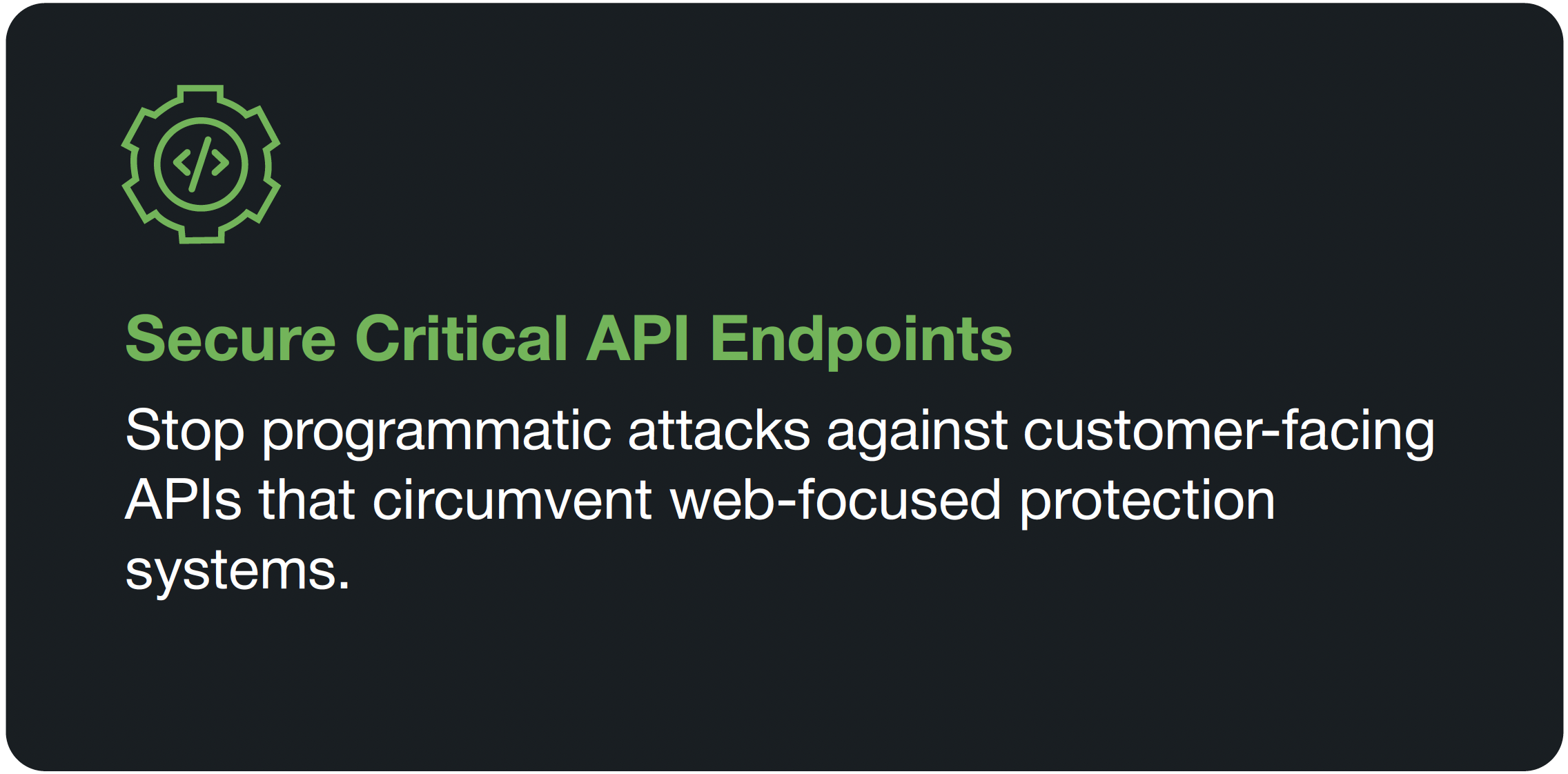Compounding this challenge is that as APIs have become more vital, they've increasingly caught the attention of cybercriminals looking for new digital attack ingresses—entry points for malicious actors to infiltrate networks and steal sensitive data. One particularly vulnerable category of APIs are those accessed programmatically by machines and applications, which often lack the robust security controls of their browser-based counterparts.
A fresh perspective on API protection is needed—one tailored to the unique demands of securing machine-to-machine communication.
The Risks of Unguarded Machine-to-Machine APIs
APIs are increasingly being used to facilitate communication between machines and applications, without the need for human interaction via a web browser. Common examples of such programmatic API usage include:
- Payment processing APIs offered by various providers, which allow third-party developers to integrate payment functionality into their own applications without controlling the payment page itself
- Social media APIs that enable developers to access user data and functionality, such as retrieving a user's friends list or profile information, without going through the standard web interface
- Developer APIs provided by AI and machine learning companies, which allow programmatic access to their services and data for use in third-party applications and integrations
While these machine-to-machine interactions help drive efficiency and innovation, they also expose APIs to a new realm of cybersecurity risks. Automated threats like credential stuffing, account takeovers and data scraping can be launched at scale against these endpoints, which often lack the visibility and safeguards of browser-based APIs. And traditional web security measures, such as browser fingerprinting and JavaScript-based checks, are ineffective in the context of machine-driven API traffic.
This leaves enterprises vulnerable to a wide range of potential attacks and abuses, such as:
- Credential stuffing attacks running 24/7 against your authentication endpoints
- Data scraping operations silently harvesting your competitive intelligence
- Inventory manipulation draining your resources before legitimate customers can access them
Guarding the Edge: An Effective Approach to API Security
To mitigate the risks associated with machine-to-machine API traffic, global enterprises need a purpose-built solution that can provide comprehensive protection at the network edge. This is where the concept of API edge protection comes into play.
API edge protection involves deploying security measures at the outermost boundary of an enterprise's network, where APIs are exposed to the internet. By intercepting and inspecting API traffic at this critical juncture, edge-based solutions can identify and stop malicious activity before it reaches backend systems and data stores.
Key capabilities of an effective API edge protection solution include:
- Real-time traffic analysis and threat detection powered by machine learning algorithms
- Fine-grained access controls and authentication mechanisms to ensure only authorized clients can access APIs
- Rate limiting and throttling to prevent abuse and maintain service availability
- Contextual risk assessment to spot suspicious patterns and anomalies
By implementing these advanced security controls at the edge, your business can create a formidable barrier against API-based threats, without hindering legitimate traffic or impacting performance.
Harnessing the Power of Arkose Edge for API Security
Arkose Edge is a powerful API solution that leverages advanced risk assessment and adaptive authentication to safeguard APIs against a wide spectrum of automated threats.

Deployed at the network edge, Arkose Edge acts as an intelligent gatekeeper for API traffic, continuously monitoring requests and responses for signs of malicious activity. When a potential threat is detected, Arkose Edge triggers real-time countermeasures to neutralize the attack before it can cause damage.
By integrating seamlessly with existing API gateways and management platforms, Arkose Edge provides a flexible and scalable solution for securing machine-to-machine API interactions across diverse environments and use cases.
Key benefits of Arkose Edge for API security include:
- Extended protection beyond browsers so enterprises can implement consistent security across all digital surfaces, even where client-side integration isn't possible.
- Comprehensive protection against automated attacks like credential stuffing, account takeovers, scraping and inventory hoarding
- Reduced fraud losses and operational costs associated with API abuse and exploitation
- Improved visibility and control over API traffic patterns and client behaviors
- Frictionless, risk-based authentication that minimizes disruption to legitimate API clients
Conclusion
In a world that runs on APIs, protecting these critical connection points is no longer optional—it's essential. The threats to API security will only continue to grow and evolve. Businesses that prioritize the security of their machine-to-machine API endpoints will be better positioned to safeguard against data breaches, fraud and operational disruptions.
Want to know more? Reach out to discuss how Arkose Edge can help protect your global enterprise and your customers.

